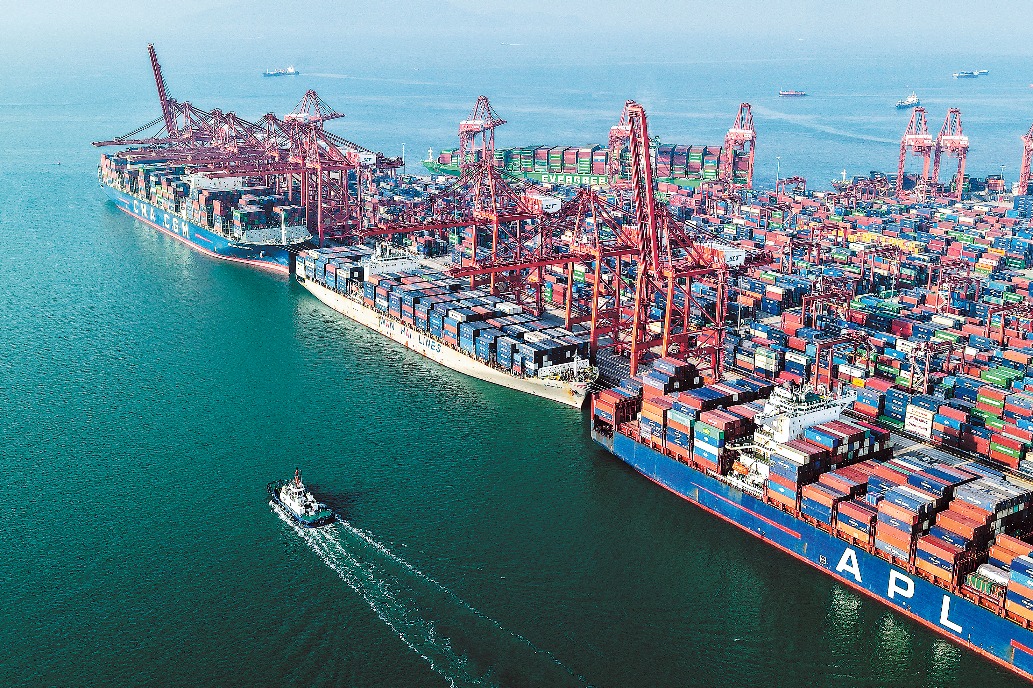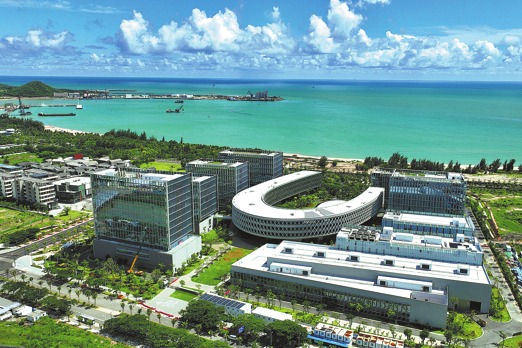Mixed picture


The global economy is set for a weak recovery amid high risks in 2024
This year was the first year of the post-pandemic era, but the global economy is not yet out of the woods, due to the lingering shadow of inflation, notably diminished growth momentum and increasingly prominent structural problems. Looking ahead to next year, global growth is set to remain sluggish, accumulative structural problems will be more prominent, and risks associated with major power competition and geopolitical conflicts will further intensify, making it more difficult to boost global growth.
By virtue of the end of the COVID-19 pandemic and massive economic stimulus policies rolled out by countries, the global economy has outperformed the pessimistic predictions made at the beginning of the year. However, the global economic recovery is built on shaky foundations and lacks solid momentum.
Global growth forecasts by the International Monetary Fund, the OECD and Goldman Sachs stand at 3 percent, 2.9 percent and 2.7 percent respectively, around 14 percent lower than those in 2022 and well below the average annual growth rate (3.8 percent) in the two decades before the pandemic.
According to projections by the OECD, the World Bank and the IMF, the US economy will display resilience, with a growth rate of over 2 percent for the year. The European Union's GDP is projected to grow at just 0.6 percent, although Southern European economies, including Portugal, Spain and Greece, are projected to grow by over 2 percent. Western and Eastern European countries are mired in slow growth, with over 10 countries including Germany, Sweden and Hungary sliding into negative economic growth. Japan is projected to grow by around 2 percent, performing well among the advanced economies on the back of currency depreciation, inflation and an increase in net exports.
Developing countries as a whole are projected to grow by around 4 percent, well above the average growth rate of the developed countries. Of that, growth across emerging Asian economies remains the envy of much of the world, with an overall growth rate of 5.2 percent, higher than last year's 4.5 percent. Growth in Central Asia is stabilizing, basically on par with the rate seen last year. Countries in the Middle East and North Africa are projected to have weaker growth momentum while countries in Latin America and sub-Saharan Africa are projected to witness a significant economic slowdown.
The global economy is beset with downside risks albeit with good omens. On the one hand, the global economy has achieved better-than-expected growth. On the other hand, a lack of further growth momentum is set to weigh on the recovery momentum — this is a result of the complex interactions among multiple factors.
Resilient growth in the Chinese and US economies is the main driver of better-than-expected global growth.
Driven by strong growth in private investment and consumer spending, the US economic growth rate is much higher than the forecasts made at the beginning of the year (which ranged from 0.4 percent to 1 percent). In the first, the second and the third quarter of this year, the US economy grew by 2.2 percent, 2.1 percent and 4.9 percent respectively on the preceding quarter. Despite signs of economic growth slowing, the figure is expected to reach around 2 percent in the fourth quarter.
China's swift post-pandemic revival is another nice surprise for the global economy. Since the start of the year, US media and experts have been sparing no effort to bad-mouth the Chinese economy. However, the Chinese economy grew by 4.5 percent, 6.3 percent and 4.9 percent respectively in the first, second and third quarters, defying doomsayers' predictions of a recession. The annual growth rate for 2023 is likely to be over 5.2 percent, much higher than last year's 3 percent, making China one of the few major economies whose growth rate for 2023 far outpaces that for 2022. China remains the largest engine of global economic growth, contributing one-third of the global economic growth, IMF economists have said.
That said, the downside risks have become more pronounced as well.
The US Federal Reserve, the European Central Bank and the Bank of England have been hiking interest rates multiple times. Many emerging market and developing economies have been forced to raise their rates. Interest rates around the world have risen to the highest levels in over a decade, resulting in credit contractions, dropping asset prices, shrinking wealth and heavier debt burdens, all of which will put more downward pressure on economic growth.
The stubborn inflation has proved difficult to tame. Following efforts to tame inflation over the past more than one year, the world inflation rate has declined from 8.7 percent in 2022 to 6.9 percent. But core inflation is still as high as 6.3 percent, much higher than the target range.
Meanwhile, debt issues are another chronic problem for global growth. By the end of September 2023, global debt had reached a historic high of $307.4 trillion, or 333 percent of the global GDP. The debt-to-output ratio in emerging markets hit an all-time high, at 255 percent. Over half of the medium and low-income countries have been mired in debt difficulties, as reported by the Institute of International Finance.
Geopolitical conflicts have become the biggest uncertainty, or the "X factor", for global growth. The Ukraine crisis is still far from being resolved, the Israel-Palestine conflict has erupted, and turmoil in Africa, the Caucasus and some other regions has worsened, creating huge obstacles to global economic growth. The United States is intensifying its strategic competition with China and rallying its allies to continuously increase their "de-risking" activities, which creates another major roadblock for global growth.
Most risk factors we have seen in 2023 will continue into 2024. Some risk factors, such as the debt problem, may even further deteriorate. The year 2024 is a peak year for debt repayment. It's possible that some medium and low-income countries will be mired in debt distress, creating a new obstacle to growth. Some structural problems, such as problems in the real estate market, are not only a drag on the Chinese economy, but also a thorny issue for the US, Australia and some European countries. The inflation in the world's major economies is still much higher than the policy target, a sign that interest rates will stay high for longer and its negative impacts on the economy will start to show.
The world's major economies may mostly witness a slowdown in 2024, further diminishing the growth momentum for the global economy.
The COVID-related excess savings have started to run out in the US in the last quarter of 2023. COVID-related preferential policies for residents, such as the COVID-19 emergency relief for student loans, are ending. The job market is cooling and external demand is further decreasing. Japan, the United Kingdom, and major emerging economies such as India and Brazil are also projected to witness an economic slowdown in 2024.
With regard to geopolitical risks, "Black Swan" events and "Gray Rhino "events coexist.
The rivalry between Russia and Western countries over the Ukraine crisis has become increasingly complicated. The Israel-Palestine conflict is nowhere near its end. Furthermore, the year 2024 is a big election year. Over 70 countries and regions will hold leadership elections, including the US, Russia, India, South Africa, Indonesia and Mexico. The rise of far-right and left-wing forces is likely to deal a blow to economic growth.
That said, there exist a number of opportunities. The meeting between the Chinese and US presidents alongside the APEC Economic Leaders' Meeting in November has helped bilateral relations bottom out. In 2024, the world's major economies including the US and the EU are likely to end their monetary tightening cycle. Breakthroughs in new technologies such as artificial intelligence will inject fresh momentum into global growth. Asia will continue to be the best hope as the driver of global growth in 2024. Particularly, an array of pro-growth economic policies unveiled by China are likely to further stimulate domestic demand, invigorate the market and inject fresh momentum into the global economy. Global growth is set to further moderate amid heightened risks, continuing to head for a "soft landing" scenario.
Xu Feibiao is a researcher and the director of the Center for BRICS and G20 Studies at the China Institutes of Contemporary International Relations. Qi Yanran is a postgraduate student at the University of International Relations. The authors contributed this article to China Watch, a think tank powered by China Daily.
The views do not necessarily reflect those of China Daily.
Contact the editor at editor@chinawatch.cn


































